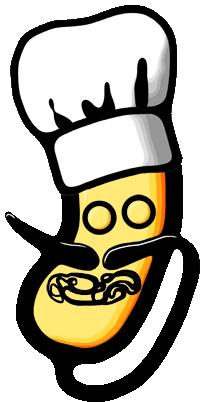Team:Edinburgh/Project
From 2008.igem.org
Contents |
University of Edinburgh 2008 iGEM Team
Team Members:
Students:
Andrew Hall, Adler Ma, Antonia Mayer, Omar Gammoh, Wenhong (Tina) Li, Xing (Ariel) He, Zejun Yan.
Main instructors:
Chris French, Alistair Elfick, Hongwu Ma
Tell us more about your project. Give us background. Use this is the abstract of your project. Be descriptive but concise (1-2 paragraphs)
| Home | The Team | The Project | Parts Submitted to the Registry | Modeling | Notebook |
|---|
(Or you can choose different headings. But you must have a team page, a project page, and a notebook page.)
Saving the World
"Cellulose is the most abundant form of fixed carbon, with 100,000,000,000 tons produced in cell walls by plants each year." [http://www.blackwell-synergy.com/doi/full/10.1196/annals.1419.026 (Wilson, 2008)]
Nowadays the world-wide food shortage is becoming more and more important. As we can image, converting cellulose to starch will be one of the most sufficient ways to solve this problem .
Project summary
Recent Wiki updates
01 July 2008
Lysis: An alternative to cellulase secretion page updated. (AH)
The Experiments
Labwork Summary
- Entries up to 01.07.2008 copied from Dr French's wiki
iGEM 2008 Labwork Summary
Primer Design
Use Artemis to find positions of start/stop codons and forbidden restriction sites (Start: All programs: School applications: Science and Engineering: Biological Sciences: Sanger: Artemis_v8) The primers should have a melting point of ~55°C (usually 17-18 bp), based on:
G/C = 4°C each A/T = 2°C each G/T = 0°C Internal mismatches complicate and can be -ve temps. Remember, dPol adds to the 3' end - don't get confused when only one strand is presented!
3' end of the primer should be G/C - This is a stronger bond than A/T, so it binds more strongly to the target DNA sequence and the Taq will extend the primer more reliably. General biobrick primers 5' part of the primer should be non-complementary (<~20bp) to the DNA being amplified, and this should contain the prefix and suffix. The sequence must start ATG and stop TAATAA - if this is not naturally the case, then replace the natural start/stop codons using non-complementary primer. It may be necessary to leave ~3 extra bases additionally at the 5' end of each primer as EcoRI (and other restriction enzymes?) won't cut at the end of sequences. Adding the extra bases basically fools EcoRI into thinking that its cutting in the middle of a DNA fragment. We should leave out one of the two 5' restriction sites to prevent annealing of the two primers to each other. (The restriction site will be added back in as part of the vector when the vector and insert are annealed together.) Therefore, prefix and suffix to use are: PREFIX Primer: gaattcgcggccgcttctag (if the following sequence is coding) SUFFIX Primer: tactagtagcggccgctgcag
Note, however, that the suffix is read for the 5'->3' strand (the same as the prefix), and therefore when designing the primer the complementary sequence must be used:
Sequence to use as suffix when designing the reverse primer: ctgcag cggccgc t actagt a
Mutagenic primers (for MABEL) (Designing mutant primers for Mutagenesis with blunt-end ligation (MABEL))
Forbidden restriction sites EcoRI - GAATTC NotI - GCGGCCGC XbaI - TCTAGA SpeI - ACTAGT PstI - CTGCAG
"Design two divergent non-overlapping primers, one forward and one reverse, centred on the offending restriction site. One of them obviously must include the base which is being mutated, preferably at or near the 5' end so that the mismatch does not affect annealing too much. The primers can be quite short (17 bases or so) since they don't overlap or include any non-complementary tails. The 5' ends of the primers must be adjacent to each other (on opposite strands, of course) so that the PCR product will include every base of the vector plus insert."
Our Primers
[http://www.openwetware.org/wiki/French_Lab Dr Chris French's OpenWetWare Site]
- Our one-stop destination for Biobrick protocols
External Links
[http://andhi.tiddlyspot.com/ Andy's lab book]
 "
"

